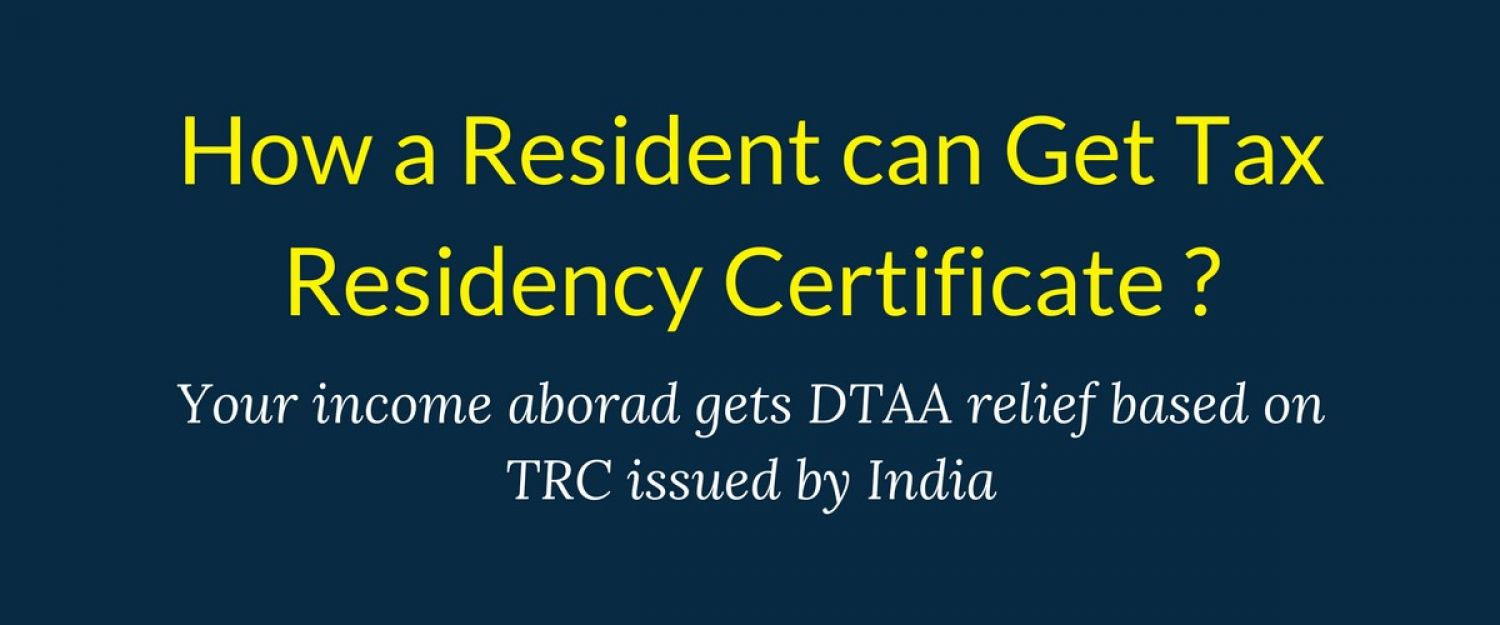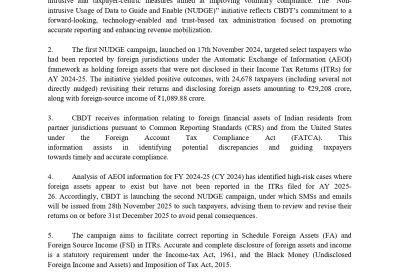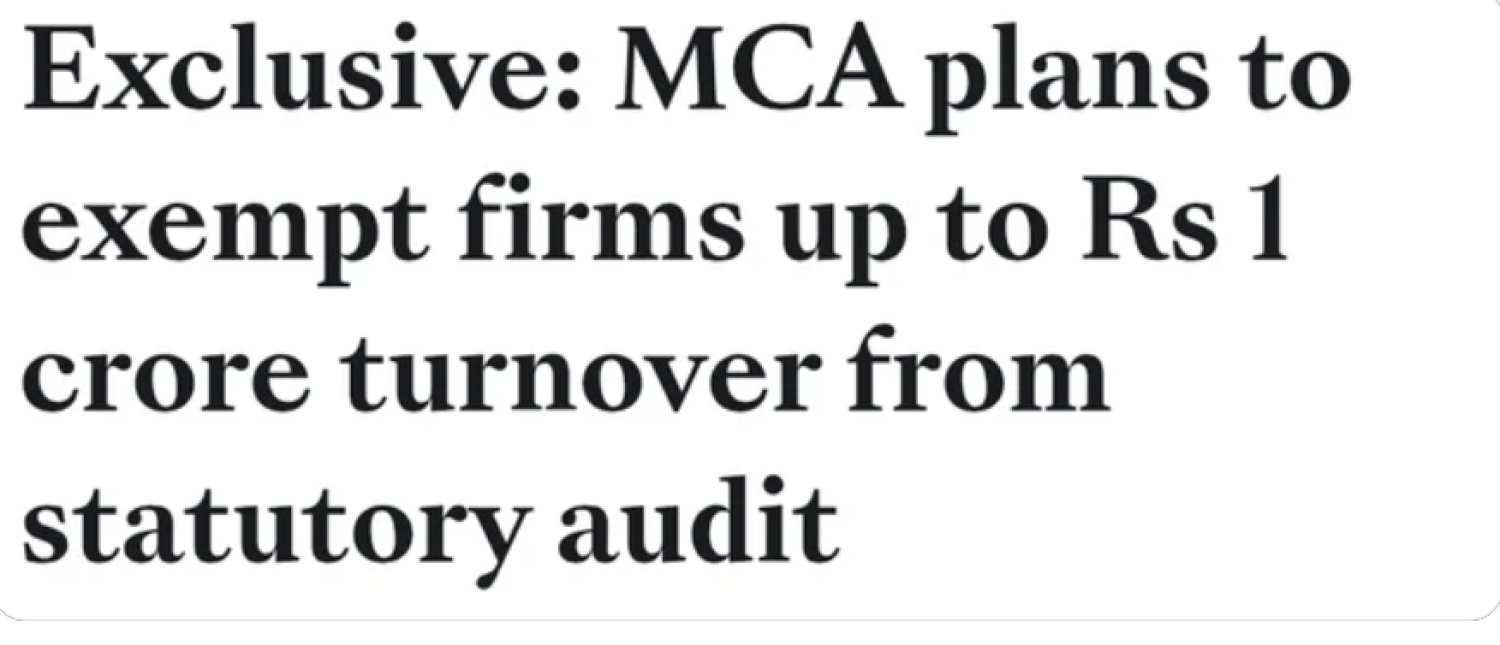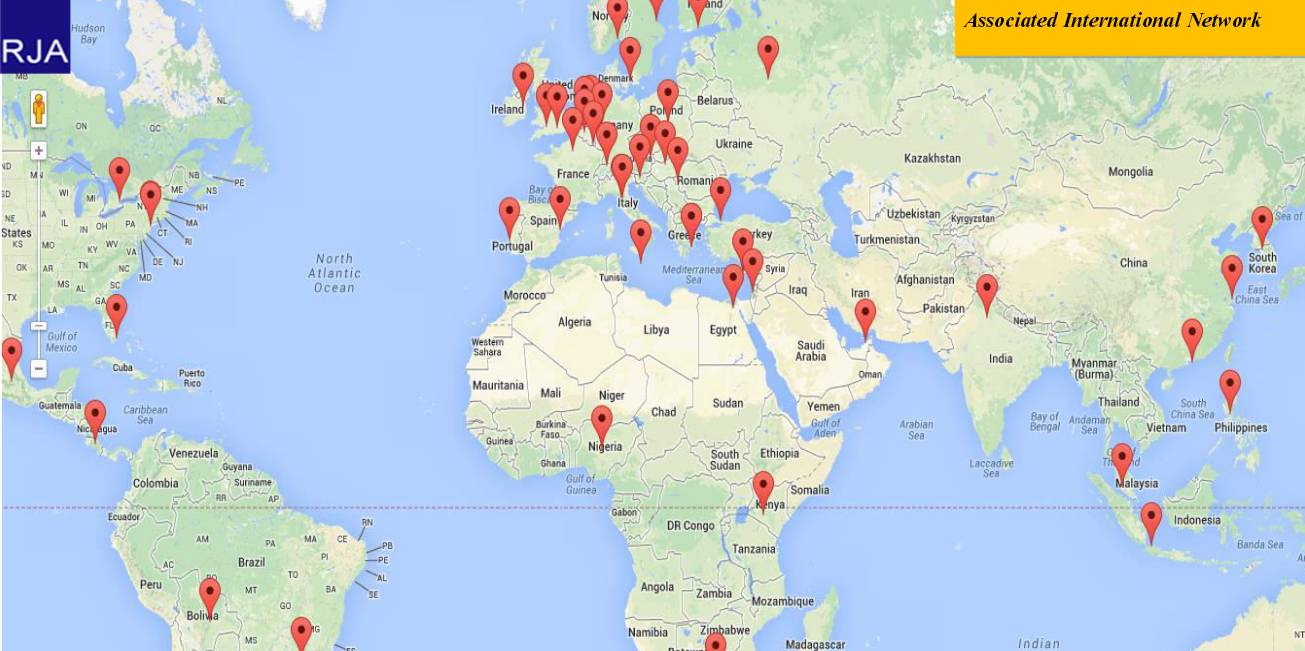Table of Contents

How to obtain a Tax Resident Certificate for tax relief under a double tax evasion deal
Tax Residency Certificate (TRC)
- The Government of India has modified the Section 90 & 90A of the I T Act, 1961 appears with finance Bill, 2012 to make the provisions provide the submission of the Tax Residency Certificate involving the specified details as a required but not appropriate requirement for the benefit of the agreements referred to in this section. The modification will implement w.e.f. 1st April 2013 and will also apply in terms to the assessment year 2013-14 and the following years.
- One of the Compulsory documents to be used by a person for tax relief under the Double Taxation Avoidance Agreement.
- It is provided by the home country of which you are called a resident and is made available to all those foreign countries by which the home country has a DTAA arrangement.
- In India, this certificate is provided by the Income Tax Authority of India to a person resident in India.
- A person shall be considered a resident of India if:
- He remains in India for 182 days or more,
- It remains in India for 60 days or more in the current financial year and has also remained in India for 365 days or more in the preceding 4 years.[For NRI, 60 days will be followed by 180 days]
Example for Point 2:
During the F.Y-2020-21, Mr.ABC, Country Project Manager, visited London for eight months and remained in India for the remaining four months.
Since he did not continue to stay in India for 182 days or more, he will be a resident of India for tax purposes if he remained in India for 365 days or more during the financial year 2019-20, 2018-19, 2017-18, and 2016-17. [4 preceding years]
This certificate may be used either to prevent a Tax deduction at source deduction from a foreign tax authority or to demand a tax refund by filing a tax return in a foreign country.
How to obtain a Tax Resident Certificate for tax relief under a double tax evasion deal
Provisions of the TRC enable specified persons to acquire this TRC certificate from their home country in order to demand relief under the DTAA that India has entered into with the other country. These regulations have been enforced to ensure that the protections of the Double Taxation Avoidance Agreements are misused by citizens. Basically, the TRC categorizes a person as a citizen of one country and makes him qualified for relief under the DTAA of the other country. This statutory requirement has been extending to FY13 and beyond. In Budget 2013, It has been accepted in Lok Sabha with a host of amendments. It was explained that the Tax Residency Certificate would be appropriate but not an adequate prerequisite to obtaining relief under the Double Taxation Avoidance Agreement, which made many satisfied.
Tax Resident Certificate is necessary for foreign nationals who have come to India for a defined period of time and are qualified for relief under the DTAA on their Indian income. It also applies to Indians who go overseas, and the host country allows the TRC to provide for tax exemptions there.
It is necessary to remember that according to the legislation, In case a person has to pay taxes in India and the United States. In such situations, however, the idea of the DTAA Deal' falls into work.
What am I being taxed for?
The summary is a short list of the existence of the revenue, originating in India, with which the U.S. has to comply. Tax returns, please.
- capital gains on the selling of property
- Lease of assets
- Salary-Income from India is to be filed in the form 1040 of the tax return. If you receive a tax credit, please fill out Form 1116.
- Agricultural revenue
- Share and mutual fund dividends
- Any income earned for freelance or consultancy work in India
- Interest in bank deposits as well as other securities held in India
As is clear from the above, it is highly important that people know the finer aspects of tax returns in the U.S. as per the IRS, in order to prevent default and to be needlessly penalised for the same thing.
Foreign national seeking relief under the Double Taxation Avoidance Agreements is required to apply to the tax authority (or any other appointed authorities) in the home country and to acquire the Tax Residency Certificate (TRC). Previously, the application for a TRC was expected to include the name of the taxpayer, the status, citizenship, tax identification number of the taxpayer, the residency status, the time for which the certificate applies, etc. There have been several countries that have not provided Tax Residency Certificate (TRC) with all this information and, in those situations, relief under Double Taxation Avoidance Agreements has not been available. This triggered a lot of shade and cries, which led the government to recently drop this provision when the Lok Sabha proposals were passed.
Taxpayers who are residents of India can now obtain a TRC by applying to the tax authorities in Form 10FA. The form includes details such as the name, address of the taxpayer, the reason for the claim of residence in India, the intent, and the time for which the TRC is requested. Upon receipt of the application form, along with the supporting documentation, the tax authority can validate the details and then grant the TRC in Form 10FB.
The deadline for filing an Indian tax return is July 31 and the Tax Residency Certificate should be received if you claim relief under the Double Taxation Avoidance Agreements. Obtaining a TRC may take a few weeks to a month, depending on the country in which it is applied. Therefore, a person coming to India should start the procedure now, so that he can receive it before the due date of filing his return of income.
Certificate for claiming relief under a DTAA agreement is specified under rule 21AB of the Income Tax Rules.
You can receive a tax residence certificate by submitting Form 10FA, the information referred to above shall be given by the non-resident assessee in Form 10F. The certificate referred to in the rule shall be properly confirmed by the Government of the country or territory of which the assessee, as applied to in the rule, claims to be resident for tax purposes.
AS per Rules 21AB: The following information must be given by an assessee in Form No. 10F, details are mention below:—
- Status of the assessee;
- Period for which the residential status, as per Section 90(4) or (4) of section 90A(4); and
- Address of the assessee in the country or specified territory outside India
- Nationality or country or specified country territory of incorporation or restarted.
- Assessee’s TIN in the country or specified country of residence and in case there is no such number, then, a unique number on the basis of which the person is identified by the Govt.
- Duration for which the TRC is applicable; and
- Address of the applicant for the period for which the TRC is applicable;
- Assesse Residential status for the purposes of income tax;
(2) The assessee may not be required to provide the information or any part thereof referred to in sub-rule (1) if the information or the part thereof, as the case may be, is contained in the certificate referred as per Section 90(4) or (4) of section 90A(4);
(2A) The assessee shall keep and maintain such documents as are necessary to substantiate the information provided under sub-rule (1) and an income-tax authority may require the assessee to provide the said documents in relation to a claim by the said assessee of any relief under an agreement referred to in as per Section 90(4) or (4) of section 90A(4);
(3) An assessee, being a resident in India, shall, for obtaining a certificate of residence for the purposes of an agreement referred to in section 90 and section 90A, make an application in Form No. 10FA to the Assessing Officer(AO).
(4) The AO on the application received referred above and satisfied in this behalf, shall issue a TRC certificate in respect of the assessee in Form No. 10FB.
Few Basic Question and Answer on TRC
|
S. No. |
Questions |
answers. |
|
i |
if in addition to the tax residence certificate, the development of other fair proof is required for proper compliance with the residence test |
Yes |
|
ii |
if the creation of other reasonable facts, even without a tax residence certificate, providing proof of residence of the payer would make the payer liable for the benefit of the Treaty? |
Yes |
|
iii |
Does this indicate that the Tax Residency Certificate is just one of the proofs, but not definitive proof of the residence of the payer? |
Yes |
|
iv |
if the tax residence certificate of the payer U/S 90(4) is a necessary condition for the payer to be qualified for the benefit of the Treaty? |
No |
|
v |
Whether the generation of the Tax Residency Certificate by the payer alone is appropriate |
No |
Latest Income Tax Chart -2020 duly updated, containing also the Covid Relaxations & Alternative Tax Regime
Complete Overview of Tax Residency Certificate (TRC)
Form 10FA for TRC application Filling with Income tax Dept
Conclusion
A Tax Residency Certificate helps to prevent double taxation of income. In the case of an Indian citizen, his global income will be taxable and the foreign country will still be taxed on income received in that country but at a concessional tax rate as per the Double Taxation Avoidance Agreement arrangement.
Getting the solution of obtaining the TRC and find out the complete answer to the below Query you may contact us on 9555 5555 480
- Whom to apply for TRC,
- How to apply for TRC?
- Is there any form of application?
- Is there any time limit for the issue of certificate?
- This content is for annual members only.

















